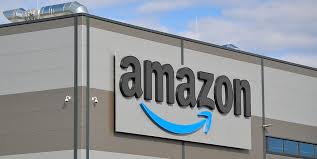Implementing strategies for continuous improvement and optimization is crucial for maximizing the performance of your Amazon FBA business. Here are some strategies to consider:
- Regular Performance Analysis:
- Set aside dedicated time to analyze key performance metrics and analytics on a regular basis. This could be weekly, bi-weekly, or monthly, depending on the size and complexity of your business.
- Use data from sales, customer feedback, reviews, and advertising campaigns to identify trends, patterns, and areas for improvement.
- Track and compare performance metrics over time to assess the impact of your optimization efforts.
- Optimize Product Listings:
- Conduct keyword research to identify relevant and high-volume search terms for your products. Incorporate these keywords strategically into your product titles, bullet points, descriptions, and backend search terms.
- Optimize product images to showcase your products effectively. Use high-quality images, lifestyle shots, and infographics to highlight features and benefits.
- A/B test different variations of your product listings to identify the most effective elements. Test different titles, images, descriptions, and pricing strategies to optimize conversion rates.
- Pricing Strategies:
- Regularly assess your pricing strategy by monitoring competitor prices, demand, and profitability. Adjust your prices accordingly to remain competitive and maximize profits.
- Consider using dynamic pricing tools or repricing software to automate and optimize your pricing based on market conditions and competitor pricing.
- Advertising Optimization:
- Continuously monitor and optimize your Amazon PPC campaigns. Adjust bids, target keywords, and ad placements to maximize return on ad spend (ROAS) and conversion rates.
- Conduct A/B testing for ad creatives, headlines, and product targeting to identify the most effective combinations.
- Leverage advertising reports and data provided by Amazon to gain insights into campaign performance and make data-driven decisions.
- Inventory Management:
- Optimize your inventory levels to avoid stock-outs and overstocking. Use sales data, demand forecasting, and lead times to determine optimal inventory levels.
- Implement a replenishment strategy to ensure products are restocked in a timely manner. Set up alerts or automated systems to notify you when inventory levels are running low.
- Customer Engagement and Support:
- Monitor customer feedback, reviews, and inquiries to identify areas for improvement in customer satisfaction and support.
- Respond promptly to customer inquiries and address any issues or concerns. Provide exceptional customer service to build trust and loyalty.
- Leverage customer feedback to make product improvements or introduce new features that align with customer needs and preferences.
- Expand Product Offerings:
- Continuously evaluate opportunities to expand your product range within your niche. Conduct market research to identify complementary products or product variations that can enhance your offerings.
- Leverage cross-promotion and bundling strategies to encourage customers to purchase multiple products from your brand.
- Stay Updated with Amazon Policies and Best Practices:
- Stay informed about changes in Amazon policies, guidelines, and best practices. This ensures you comply with regulations and take advantage of new features or opportunities.
Implementing strategies for continuous improvement and optimization is crucial for maximizing the performance of your Amazon FBA business. Here are some strategies you can employ:
- Set Clear Goals: Define specific, measurable goals for your Amazon FBA business, such as increasing sales by a certain percentage or improving customer feedback ratings. Having clear objectives will help guide your decision-making and prioritize areas for improvement.
- Regularly Track Performance Metrics: Continuously monitor key performance metrics such as sales, conversion rates, customer reviews, advertising ROI, and inventory turnover. Utilize tools provided by Amazon Seller Central and third-party software to track and analyze these metrics consistently.
- Identify Areas for Improvement: Analyze performance data and identify areas where you can make improvements. Look for patterns, trends, and anomalies in your metrics to pinpoint areas that may be holding your business back. This could include addressing negative customer feedback, optimizing product listings, or refining marketing strategies.
- Optimize Product Listings: Optimize your product listings to improve visibility and conversion rates. Use relevant keywords in your titles and descriptions, highlight unique selling points, and provide clear and compelling product images. Continuously monitor and optimize your listings based on competitor analyses and customer feedback.
- Continuously Improve Customer Satisfaction: Focus on delivering exceptional customer service and addressing any issues promptly. Respond to customer inquiries and feedback in a timely and professional manner. Leverage customer reviews to identify areas for improvement and take action to resolve any negative experiences.
- Optimize Advertising Campaigns: Regularly review and optimize your advertising campaigns on Amazon. Test different ad placements, keywords, and targeting options to maximize reach and conversion rates. Monitor your advertising spend and adjust budgets based on the performance of individual campaigns.
- Streamline Inventory Management: Efficient inventory management is crucial for maintaining stock levels and avoiding stockouts. Use data analytics to forecast demand, identify sales trends, and fine-tune your inventory planning. Consider utilizing automated inventory management systems to streamline processes.
- Stay Updated with Amazon Policies and Updates: Keep yourself updated with the latest Amazon policies, product guidelines, and algorithm updates. This ensures compliance and enables you to adjust your strategies to align with any changes. Participate in Amazon seller forums and engage with community groups to stay informed and learn from others.
- Continuously Innovate and Differentiate: Seek opportunities to innovate and differentiate your products and brand. Regularly assess market trends, customer preferences, and competitor offerings. Introduce new products, improve existing ones, and explore potential expansion into new markets or product categories.
Remember, continuous improvement and optimization require experimentation, analysis, and adaptation. Be open to trying new strategies, learning from the results, and refining your approach over time. Regularly track the impact of your optimizations and iterate on your strategies to achieve sustainable growth and success on Amazon FBA.
SHARE
